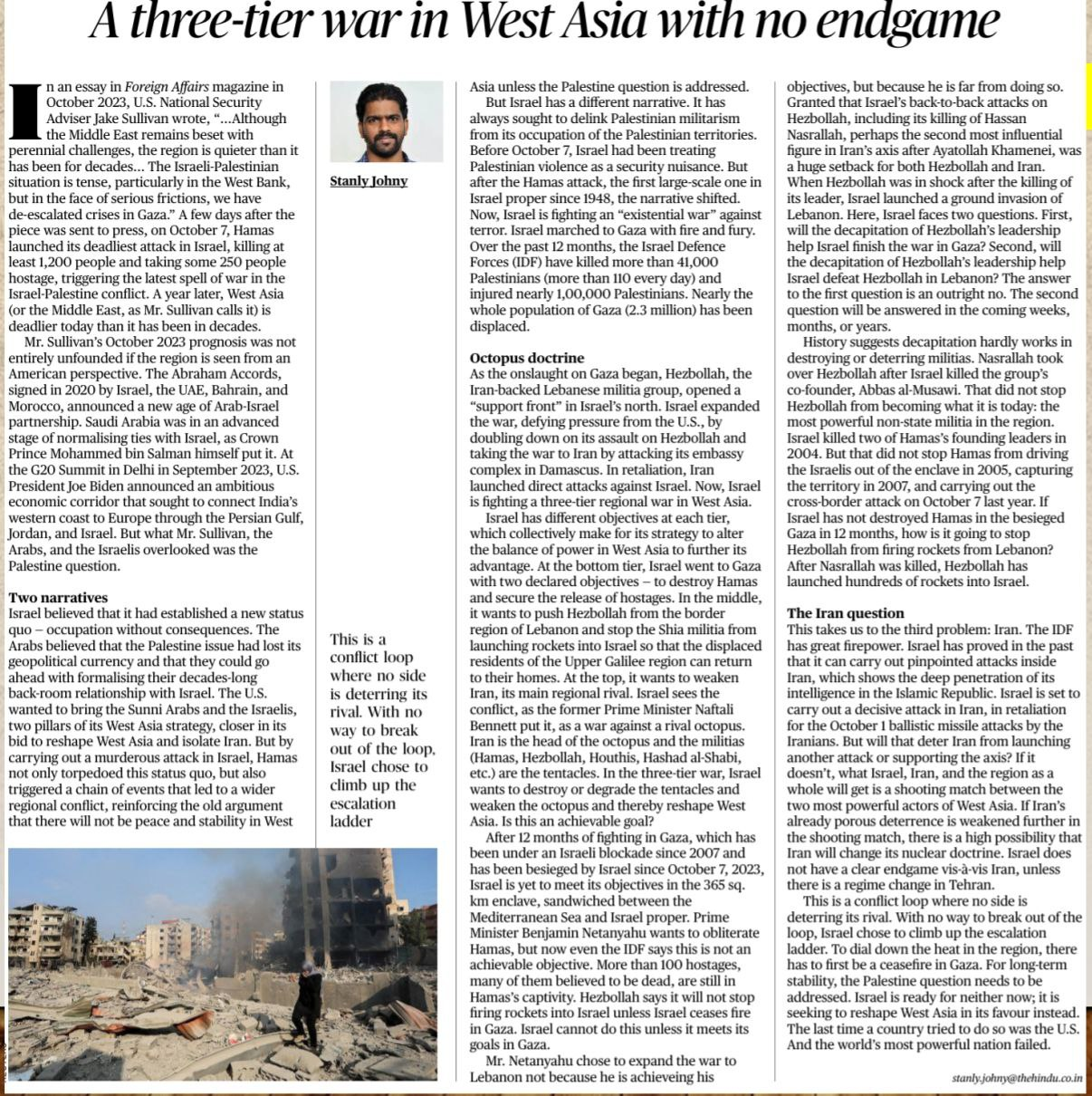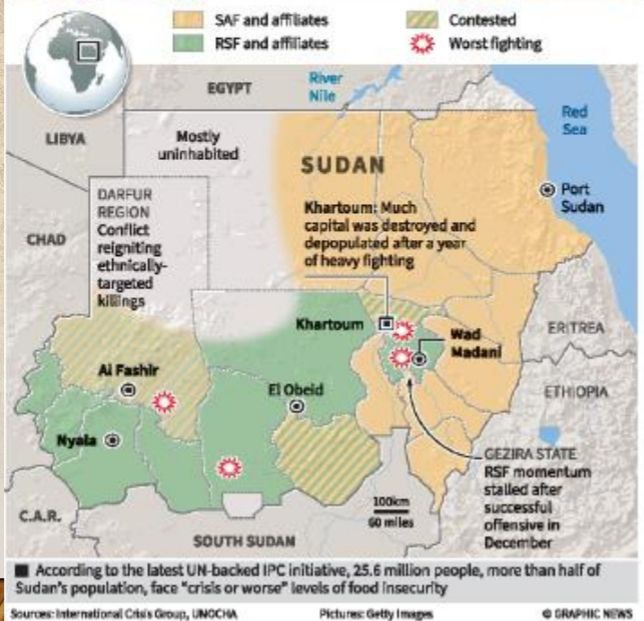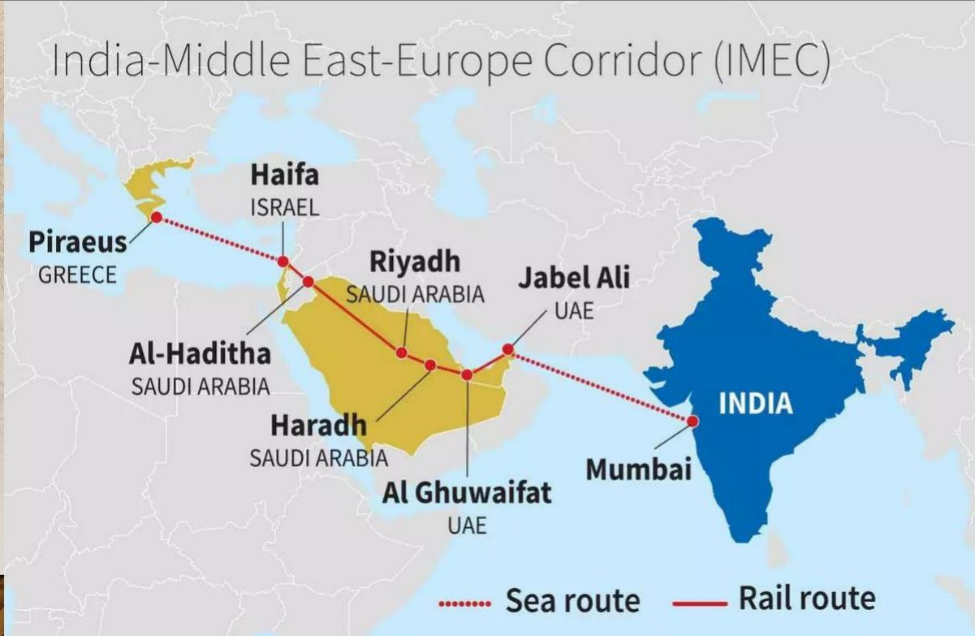Complex Dynamics of the Israel-Hamas-Hezbollah-Iran Conflict in West Asia
Introduction:
The conflict in West Asia, particularly involving Israel, Hamas, Hezbollah, and Iran, is an ongoing complex situation with deep historical roots.
As highlighted by U.S. National Security Advisor Jake Sullivan, while the region has seen some diplomatic developments, it remains embroiled in violent confrontations.
The October 7, 2023, Hamas attack on Israel, which led to significant casualties and hostage situations, reignited the long-standing Israeli-Palestinian conflict, making the region deadlier than in recent decades.
- Two Conflicting Narratives:
- Israeli Perspective:
- Israel has focused on security and has maintained a narrative of occupation without consequences. The belief that the Palestinian issue had lost its geopolitical significance led Israel to pursue normalisation with Arab states, such as through the Abraham Accords (2020).
- The recent Hamas attack shattered this sense of security and reignited fears within Israel, which responded with a large-scale offensive against Gaza.
- Arab Perspective:
- The Arab nations, while engaging with Israel, remain committed to resolving the Palestinian issue. The ongoing occupation and Israel’s handling of the conflict continue to be major obstacles to peace.
- Three Layers of Conflict:
- Israel vs. Hamas (Gaza Conflict):
- The conflict escalated following the October 7 Hamas attack, the deadliest in years, and Israel’s heavy retaliation. Hamas has maintained control of Gaza since 2007, and Israel has imposed heavy blockades, exacerbating tensions.
- Israel vs. Hezbollah (Lebanon Front):
- Hezbollah, a Lebanon-based group backed by Iran, has been involved in sporadic confrontations with Israel. The group is seen as a proxy for Iran, and Israel has prepared for the potential of escalation along its northern border.
- Iran’s Role:
- Iran is viewed as a key player in backing both Hamas and Hezbollah, using these groups to wage a proxy war against Israel. Israel has repeatedly expressed concern over Iran’s nuclear ambitions and its support for regional militias.
- Doctrinal Shifts and Escalation:
- Israel’s current decapitation strategy aims to destroy militant leadership and weaken Hamas and Hezbollah. Despite numerous attempts to eliminate key figures like Hassan Nasrallah of Hezbollah, these efforts have failed to dismantle the organizations.
- The Iranian threat remains a central issue for Israel, especially with fears of nuclear escalation.
Impact of the West Asia Conflict on India
- Energy Security: India relies heavily on oil from West Asia. Conflict may disrupt supply chains, increasing oil prices and inflation.
- Indian Diaspora: Over 8 million Indians work in West Asia. Conflict threatens their safety and could lead to mass evacuations, affecting remittances.
- Economic Impact: Trade disruptions with West Asia could harm Indian exports. Reduced remittances from Gulf countries would affect India’s economy, especially in rural areas.
- Diplomatic Challenges: India must balance its relationships with Israel and Arab nations. A misstep could strain ties with key partners in energy and defense sectors.
- Terrorism and Security Concerns: The conflict could embolden extremist groups, increasing security threats and radicalization in India.
- Strategic and Defense Ties: India’s defense ties with Israel may strengthen, especially in counter-terrorism and military technology.
- Multilateral Diplomacy: India’s stance on the conflict will face scrutiny in forums like the UN, impacting its global diplomatic position.
Conclusion:
The three-tier conflict in West Asia has no clear endgame as regional actors pursue different objectives. Israel’s attempts to address the security concerns posed by Hamas, Hezbollah, and Iran have only led to deeper conflict.
The failure to resolve the Palestinian issue continues to fuel instability in the region. While diplomatic efforts like the Abraham Accords offer some hope, they cannot fully address the region’s underlying tensions.
The conflict is set to persist unless there is a comprehensive peace process involving all stakeholders.
Mains Practice Question |
Q. “The conflict in West Asia involving Israel, Hamas, Hezbollah, and Iran is a manifestation of deeply entrenched geopolitical rivalries and unresolved historical disputes.” Critically examine the factors contributing to the prolonged nature of this conflict and discuss the potential implications for regional and global stability. (250 words)
|





